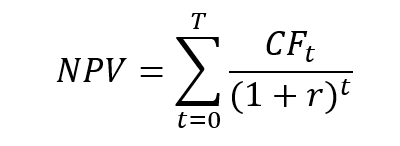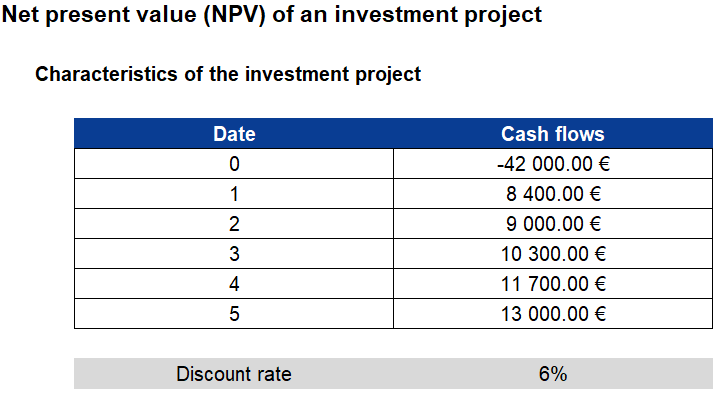Climate change’s impact on the financial sector
In this article, Maite CARNICERO MARTINEZ (ESSEC Business School, Global Bachelor of Business Administration, 2021-2022, exchange student from the University of Salamanca) explains how climate change has affected the financial sector.
For the last two decades, the environmental awareness has progressively increased. People are worried about the consequences of the greenhouse effect and the gas emissions and environmental policies play an important role in governments’ agendas. At first, the focus was mainly on the economic activity’s repercussion on the environment and developing less polluting practices. But many actors have acknowledged the major repercussions of climate change on countries, firms, the financial sector and the global economy. Therefore, the management of the risks associated to climate change is crucial.
To illustrate this point, take for instance PG&E, California’s principal power supplier. After the California wildfires in 2018, the firm had to declare bankruptcy due to the damage that its infrastructure had suffered and the amount of obligations that it had to pay because of being responsible of the ignition. Nevertheless, the drought and the extremely high temperatures were crucial for the start, expansion and severity of the fires. Also, the insurance sector is one of the most exposed to the physical risks of the climate change.
There are some regions and sectors specially exposed to these risks, but in a globalized world, they will affect, more or less, all the countries and sectors and will challenge the financial sector. Many agreements have been signed to approach the situation, such as the Kyoto Protocol, the GRI Sustainability Reporting Standards in 1997 (the Global Reporting Initiative, GRI, is a ONG created by Coalition for Environmentally Responsible Economies, CERES; and the United Nations Environment Programme, UNEP), the 2030 Agenda in 2015 or the Green Pact in 2019.
Financial markets’ adaptation
Financial markets have to be adapted, like the 2008’s crisis proved, with measures to ensure the transparency of the environmental risks and the criteria applied. That is the consequence of the “greenwashing” (a marketing method that consists in the use of the ecological argument to communicate with the public to portray the business as an eco-responsible one, when that is in fact not true. Such practice is deceptive and can be likened to false advertising) a phenomenon that appeared due to the increasing demand of “green” financial products, which are financial initiatives, processes, products or services either designed to protect the environment or to manage how the environment impacts finance and the investment. The problem is the lack of clarity when we have to determine if a financial product is sustainable. Sustainable financial products are the ones that take into account social and environmental factors when investing. That can be evaluated using the ESG (Environmental, Social and Governance) criteria.
Despite the risks inherent to climate change, it is important to note that it also comes along with many opportunities related to finding solutions and alternatives to the problem, like the renewables energies, whose value has increased that much, that some are even talking about the formation of a “green bubble”. Also, there is an increasing demand of green bonds (fixed-income assets destined to the financing of projects that meet environmental criteria, sustainable activities or projects to minimize the climate change), green loans and deposits, and energetic efficiency plans.
Some important sustainable financial products:
Assets:
- Sustainable loans and sustainability linked loans
- Sustainable credits: green credits, social credits
- Green mortgages
- Agribusiness
Investment funds:
- Green
- Social
- Mixed
Liabilities:
- Green and social bond principles
- Transition bonds
- ODS-linked bonds
- Sustainability linked bonds
Risk associated to climate change on the financial sector
Assets:
- Sustainable loans and sustainability linked loans
- Sustainable credits: green credits, social credits
- Green mortgages
- Agribusiness
Investment funds:
- Green
- Social
- Mixed
Liabilities:
- Green and social bond principles
- Transition bonds
- ODS-linked bonds
- Sustainability linked bonds
Risk associated to climate change on the financial sector
But, how to measure the risk of climate change? First of all, we have to rank the exposures depending on criteria like the geographical area, business model, gas emissions or vulnerability towards physical changes. A good starting point is the TCFD (Task Force on Climate-Related Financial Disclosures) recommendations on what are the most exposed sectors. Then, using different scenarios, we have to measure the risk. Nevertheless, there is little evidence that the market has put a price on each type of climatic risk, and even when they are included on the risk measurement of the asset, they are not completely incorporated or they are subject to a very high uncertainty, resulting in a very high volatility.
To sum up, climate change and its raising awareness have completely altered the financial markets outlook. A new concern about the risk of the climate change has been brought up, but also new areas of investment that look very promising, even with the possibility of the development of a new bubble. Therefore, I think that those risks need to be taken into account and its importance is only starting to grow. In the future, we will see how climate change plays a great role in the financial markets.
Related posts on the SimTrade blog
▶ Jain A. Green Investments
Useful resources
Mazars Managing climate change risks
Task Force on Climate-related Financial Disclosures (TFCD) Climate change is a financial risk to the global economy
The Guardian The evolution of greenwashing
Reuters PG&E charged with manslaughter for sparking California wildfire
NPR PG&E’s equipment started the fire
Investopedia ESG criteria
Novethic What is greenwashing?
Satander Sustainable finance
“The Green Qualifications Workbook” by the Chartered Banker Institute.
About the author
The article was written in December 2021 by Maite CARNICERO MARTINEZ (ESSEC Business School, Global Bachelor of Business Administration, 2021-2022, exchange student from the University of Salamanca).








